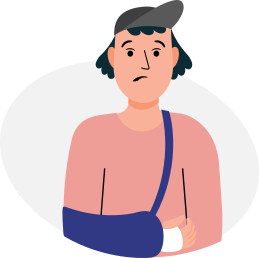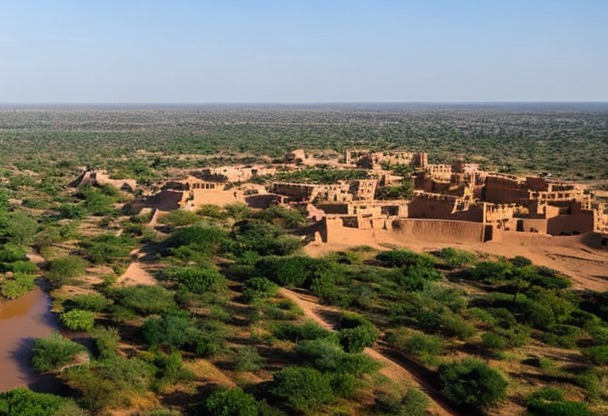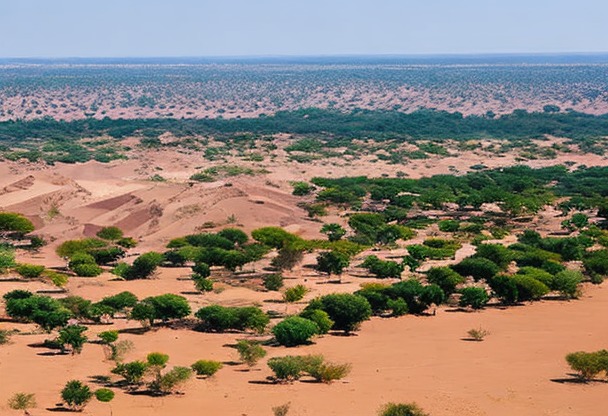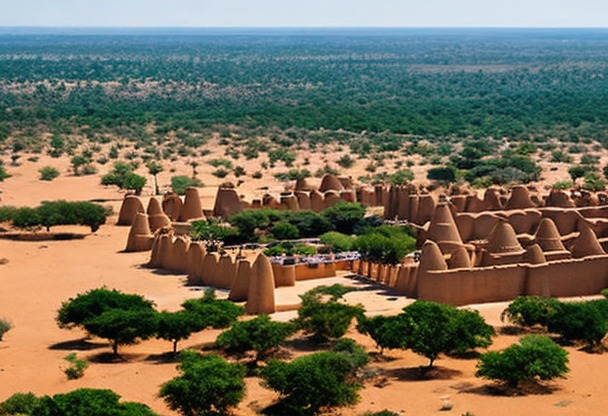Best time to travel to Mali
Choosing the right period for your trip to Mali can make all the difference. It's important to consider climatic elements, seasonal events and busy tourist periods to maximize your travel experience.

Location
Climate
Understanding tourist seasons
Mali has a tropical climate with two main seasons: the dry season and the rainy season. The best time to visit Mali will depend on your preferences and what you want to do during your stay.Dry season (November to May)
The dry season is generally considered the best time to visit Mali, due to the milder weather and the low probability of rain. Temperatures are cooler, especially in the north of the country, making outdoor activities more enjoyable. However, it should be noted that dust can be a problem during this period due to strong winds and lack of humidity.Rainy season (June to October)
The rainy season is marked by heavier rainfall and high humidity. Temperatures are generally higher during this period, which can make outdoor activities less enjoyable. However, the rainy season also offers lush green landscapes and opportunities to observe wildlife in their natural habitat.Major cultural events
Mali is a country rich in traditions and cultural events. Attending one of these events will allow you to discover Mali's cultural richness and enjoy a unique experience.Festival au Désert (January)
The Festival au Désert is an annual event held near Timbuktu, in the Sahara Desert. Since 2001, it has celebrated traditional Tuareg music as well as other international musical genres, bringing together local and international artists for open-air concerts. However, due to the unstable political and security situation, the festival is currently suspended until further notice.Festival on the Niger (February)
This festival takes place in Ségou, a town along the Niger River. It celebrates the arts and culture of Mali through music, dance and handicrafts. The festival attracts thousands of local and international visitors every year.Independence Day (September 22)
Independence Day is a national holiday commemorating Mali's independence from France in 1960. It's an opportunity for Malians to celebrate their culture and history with parades, speeches and festivities across the country.Low and high season periods
Low and high season correspond respectively to the periods when there are fewer or more tourists visiting Mali. Prices, accommodation availability and attractions may vary according to the season.Low season (June to October)
The low season coincides with the rainy season and is characterized by a reduced number of visitors. Hotel and flight rates are generally more affordable during this period. However, some roads and tourist sites may be inaccessible due to heavy rainfall and flooding.High season (November to May)
High season is the most popular time to visit Mali. Temperatures are cooler, which attracts more tourists, especially during the European winter months. Hotel and flight prices can be higher during this period, so it's advisable to book in advance to get the best deals.Practical tips for planning your trip
- Vaccines : Make sure your vaccinations are up to date before you leave for Mali. Recommended vaccines include yellow fever, hepatitis A and B, typhoid, meningitis and tetanus.
- Policy: Mali faces political and security challenges, particularly in the north of the country. Find out about the current situation before planning your trip, and consult your government's travel advice.
- Visa : Find out about visa requirements for entering Mali. Most foreign nationals must obtain a visa before arrival.
Insurance

Your credit card does not cover you in all situations, that is whyIt is essential to take out insurance before you leave to avoid any unpleasant surprises. If you need to see a doctor or be hospitalized, in some countries, medical costs are very high and you will then find yourself having to pay several thousand euros.
Our partner Chapka Insurance proposes the contract CAP ASSISTANCE 24/24 with many essential guarantees.


Flights

Your flight has been cancelled or delayed ?
You may be eligible for a compensation of up to €600 ! For this, lawyers are responsible for handling your claim with the airline and are only paid when the reimbursement is effective.
In conclusion, no financial risk for you, only advantages!
Statistics on immigration to Mali
Every year, Mali welcomes thousands of foreigners from the four corners of the globe for a variety of reasons, including work, study and tourism. Statistical data on immigration to Mali provides a better understanding of the profile of migrants and trends in international mobility.Immigrant origin
According to available statistics, the majority of immigrants to Mali come from neighbouring countries such as Mali. Senegalthe Ivory Coastthe Guinea or the Burkina Faso. However, there is also a significant presence of foreigners from European and Asian countries such as France, Germany and Italy. China or theIndia.Immigrant population by sex and age
The data show that the immigrant population in Mali is made up of a slightly higher proportion of men (55%) than women (45%). In terms of age, the majority of immigrants are aged between 25 and 64 (60%), followed by young people under 25 (30%) and people over 65 (10%).Most popular visas in Mali
Mali offers different types of visa for foreigners wishing to stay in the country. The most popular visas are the following:- Tourist visa This visa allows foreigners to visit Mali for a maximum of 90 days. This visa is generally issued for a single or multiple entry.
- Student Visa For foreigners wishing to study in Mali, this visa is valid for the duration of the academic course, with the possibility of renewal.
- Business Visa This visa is issued to foreign professionals wishing to carry out commercial or professional activities on Malian territory. Its period of validity varies according to the needs of the applicant.
- Work visa This visa is intended for foreigners wishing to work as salaried employees in Mali. This visa is generally accompanied by a work permit issued by the competent authorities.
- Family reunion visa This type of visa is intended for family members of a foreign resident in Mali. It allows them to join a parent, spouse or child already living in the country.
International tourism figures for Mali
Mali's rich cultural and historical heritage attracts many international tourists every year. The most visited sites include the city of Timbuktu, a UNESCO World Heritage Site, as well as the Bandiagara cliffs and the Boucle du Baoulé national park.International tourist arrivals
Key figures for international tourism in Mali show steady growth in the number of foreign visitors since the early 2000s, with a slight dip in 2012 and 2013 due to the security crisis affecting the country. Since then, the tourism sector has seen a gradual recovery, thanks in particular to efforts by the Malian authorities to improve security and promote the country's attractions through targeted communication campaigns.Tourism revenue
Revenues generated by international tourism in Mali have also risen significantly in recent years, contributing to the country's economic development. Indeed, the tourism sector represents a major source of foreign currency and employment for the local population.






